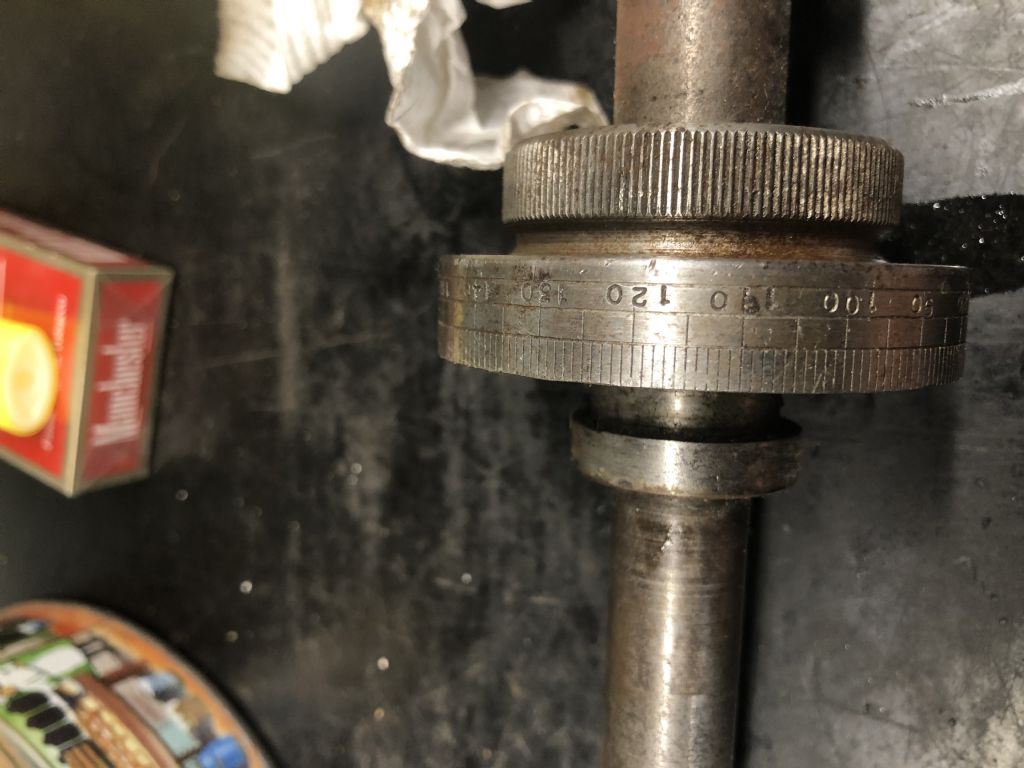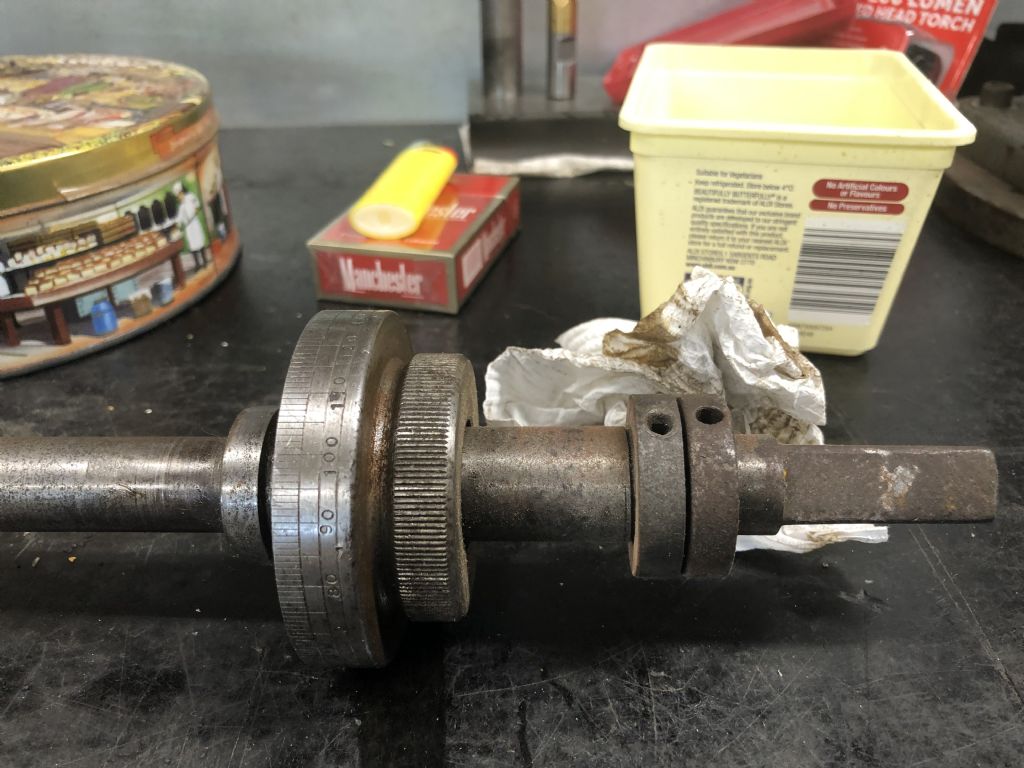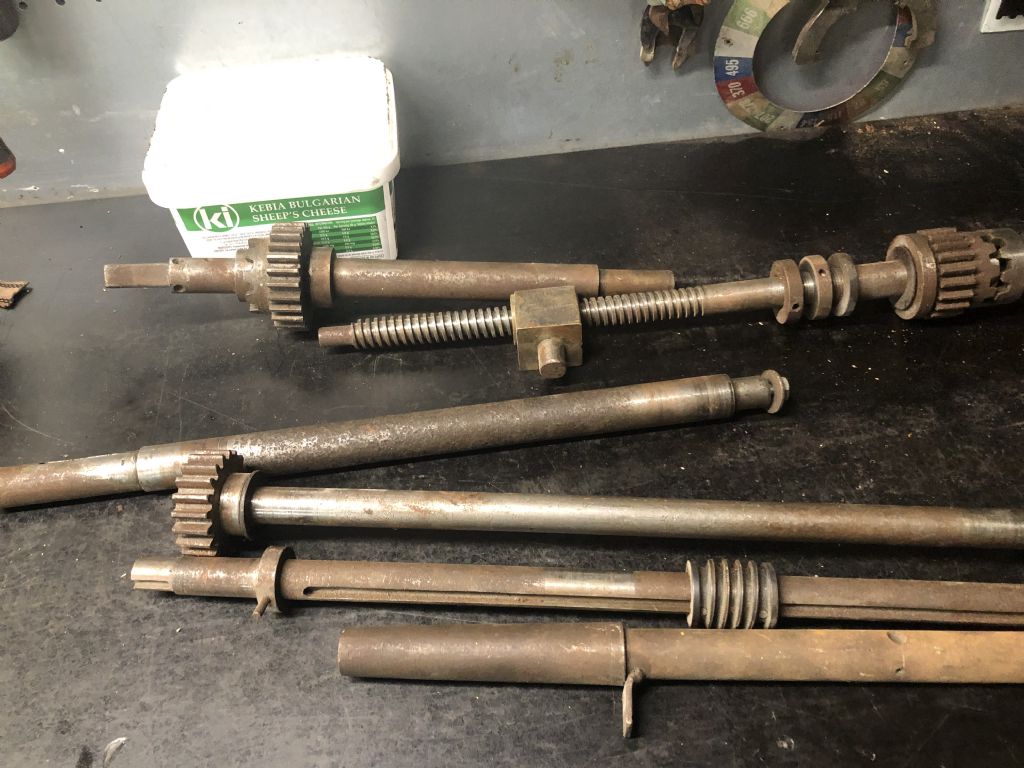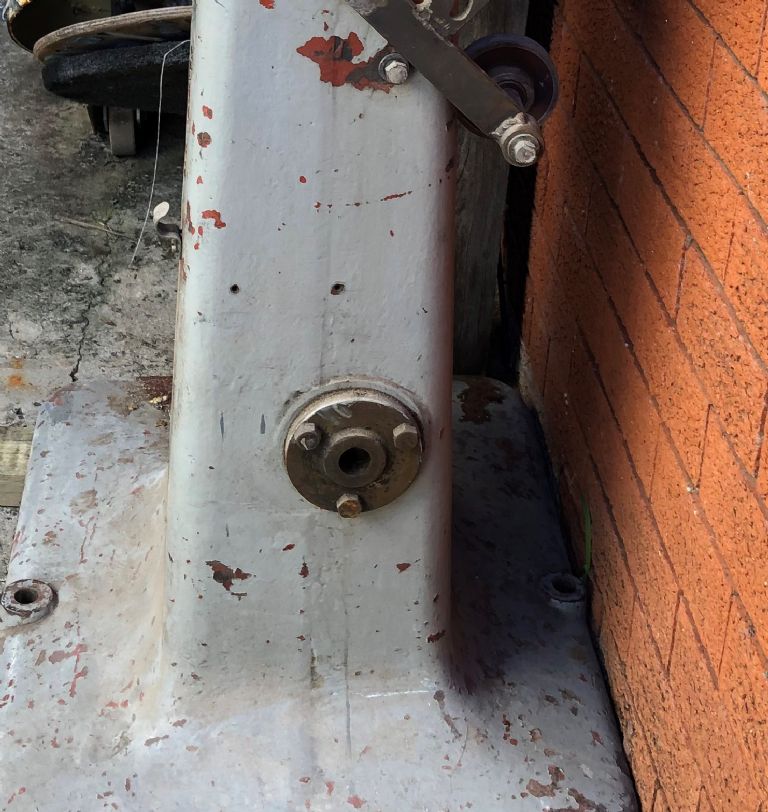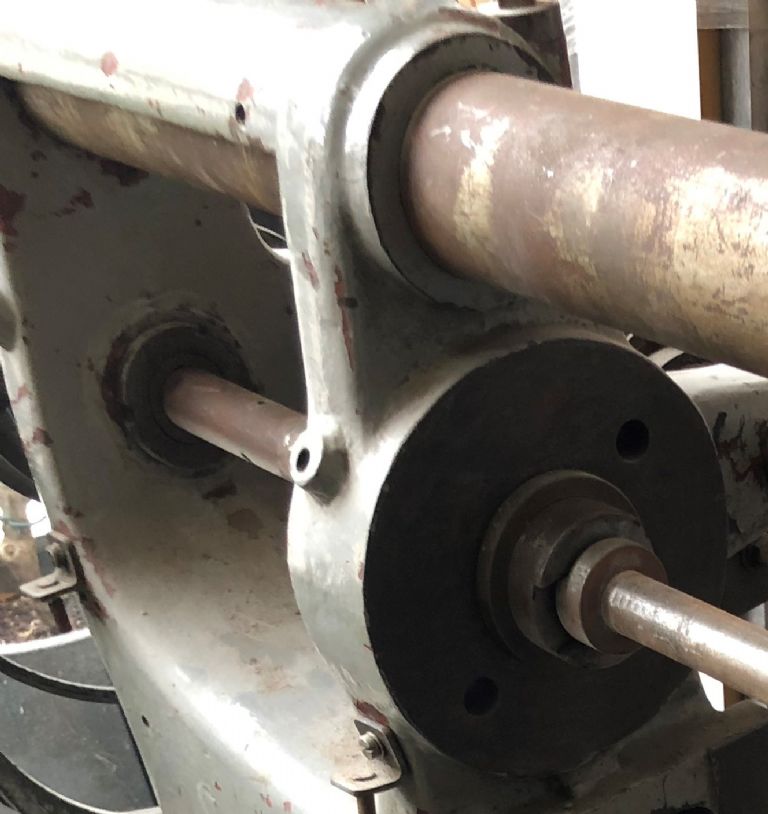The casting is a single-piece and made for that milling-machine, but given the similarities might have been by the same manufacturer as your lathe.
The bush at the bottom, and its mate on the front, are clearly original because the one photographed is on a faced boss on the casting. My guess is that the machine was originally built for line-shaft drive via a primary pulley that used the bush, then up to the secondary shaft on the two bearers to the side of the spindle. This was fairly common practice and allowed a greater speed reduction from the line-shaft. Maybe one of those shafts in your previous photos fits there.
In restoring my Denbigh mill of sumilar appearance and vintage to service, I am faced with the same problem of speed, having calculated the necessary spindle rpm range as from about 70 to 120 rpm.
What we don't really know either is what is meant to connect the side-shaft to the spindle. Those V-belt pulleys should be fine though I doubt they are original. It might have had a 2-speed gear drive or a back-gear type speed reducing gear. Whatever it was, it used only set-screws or grub-screws as their dimples in the spindle are clearly visible. You could use gears but you've then the problem of either selecting gears to match the existing centres for correct meshing or making some sort of carrier-frame – difficult to acheive without a lot of work and risking a rather ungainly result.
The two arms dangling from the side-shaft look like a modification, probably carrying a belt-tensioning roller.
[Carefully saves this text to be able to refer to photo set 1…]
'
I am coming to think that in its original guise, comparing yours to sample machines in old catalogues and text-books:
The primary drive was an overhead line-shaft or separately-mounted motor with stepped pulleys, to a shaft in the base of the column. A second belt then either –
– ran to one on the rear end of the spindle, and the side-shaft carried a back gear, or
– to the side-shaft then gears or a further pulley pair to the spindle.
Of those I favour the former but you might find problems sourcing gears to match the rigidly- set centres if you replace the V-pulleys. If you keep that belt final drive you will need replace the tension roller if it is missing. I would also recommend you place the motor high above swarf and dust (as I have with my Harrison lathe), and to allow a large single-step belt reduction with sufficient wrap on the smaller pulley. Use just one, twin-belt for that primary drive, and fit the driven pulley either within the frame or if external, as close as possible to the bearing to minimise the overhanging load on the shaft.
You will need a large mechanical speed-reduction, because motors do not like running slowly. I am not sure if as some say, this is because their fans beome inefficient or for some electrical reason.
The Newton-Tesla VFD sets on Myford 7 and Harrison L5 lathes keep the motor happy at 900-1000rpm even with the machine itself, on its lowest mechanical speeds, running at <100rpm. (I estimate by eye, 60-70rpm on the Harrison). The speed controls' Green advisory sectors are high up on the scale.
One option for a partly-geared drive (as I may use on my comparable example) is to put the gears at the motor end, or in between a primary and secondary belt. That allows making a gearbox to suit the application, using readily-available gears and minimal changes to the machine itself.
Belt drives tend to be quieter than fast-running spur gears, too, but more to the point give some warning and protection by slipping if something jams or you accidentally over-load the cutter.
2.5HP…. Large for a machine like that, especially with the torque-multiplying given by the heavy speed reduction; risking inadvertently overloading a relatively light machine with small shafts running in plain bearings. My Denbigh will have a 1HP single-phase motor I obtained long ago, and though my other machines have 3-ph conversions I don't envisage that necessary for a small horizontal mill. I may need limit the cutters' maximum diameters, widths and feed rates but that's not a problem.
You could fit the motor below the shaft as you suggest but that is a bit close to swarf and cutting-fluid. It is better somewhere above the machine.
'
The small holes at 45º – for oil? Yes. When you remove the spindle, ensure they are clear and clean through. I do not know if they originally held proper oilers but that would be a good idea, if only a simple lid to keep dirt out.
A puzzle feature on my machine is a small lug with vertical blind hole, on the side opposite the corresponding front oil-hole. It may have been to hold a lamp, possibly offered as an extra – no reason I could not use it thus.
.
Mine has its original 3-step flat-belt pulley on the spindle, with a large grub-screw accessible through a hole in the pulley face – a previous owner had bolted a modified motorcyle sprocket to that pulley, for a chain-drive from a motor and ancient car gearbox on an overhead frame. It does not have a side-shaft, nor provision for an intermediate shaft low down, because the Denbigh H-series mills were for fitting to a separately-supplied stand or customer-built bench.
I'm contemplating a belt drive to reduction-gears, then belt final-drive. Alternatively, my two gear-pairs available, on the spindle and on a side-shaft on swing-arms with bearings on the spindle, controlled by a side-frame mounted on the original machine-to-stand fastenings. A a geared final drive / Lenix-pattern belt-tensioning, from a motor above the machine. The feed needs replacing completely, and is driven from the spindle's rearward extension.
Michael Minas.




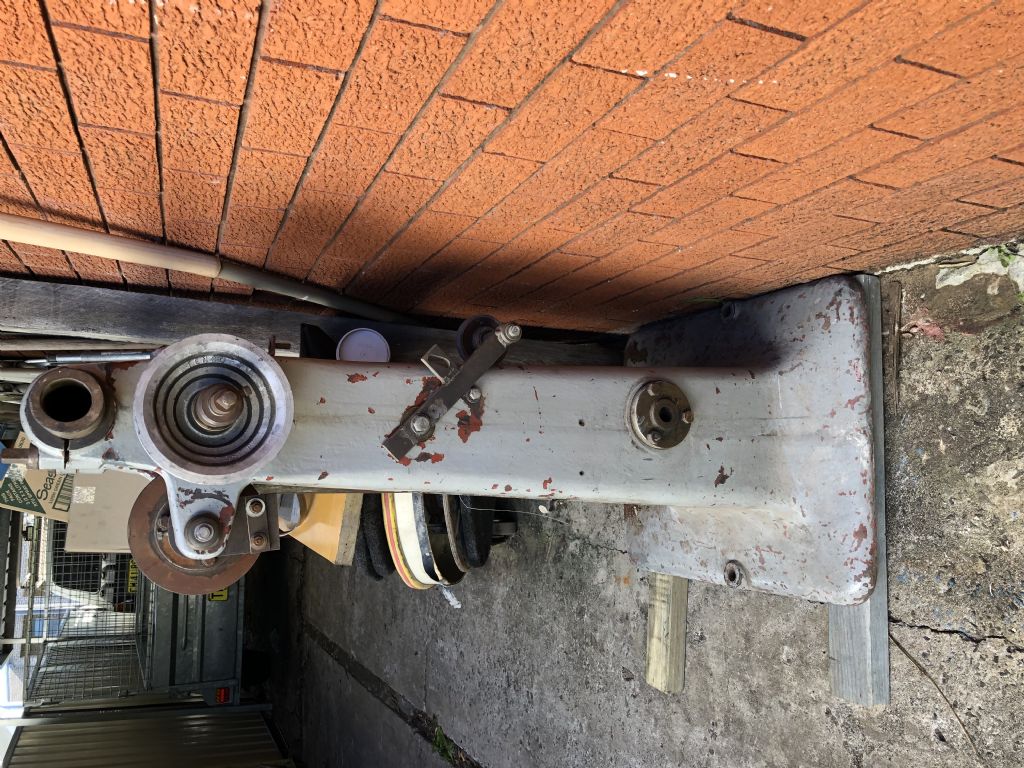
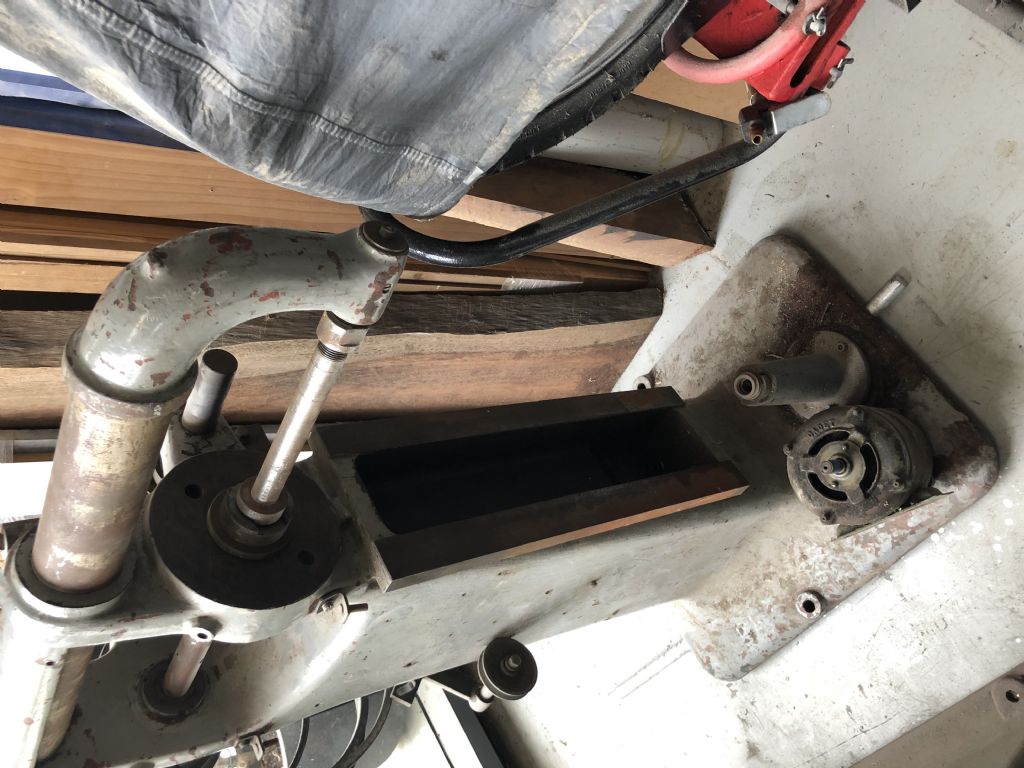

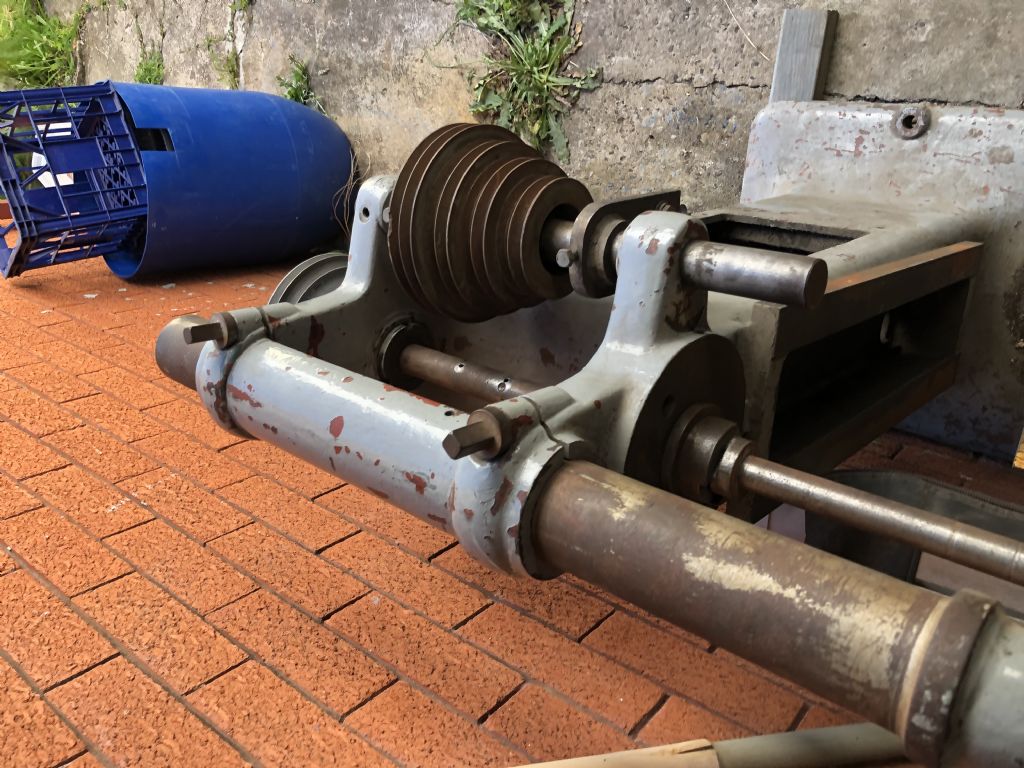


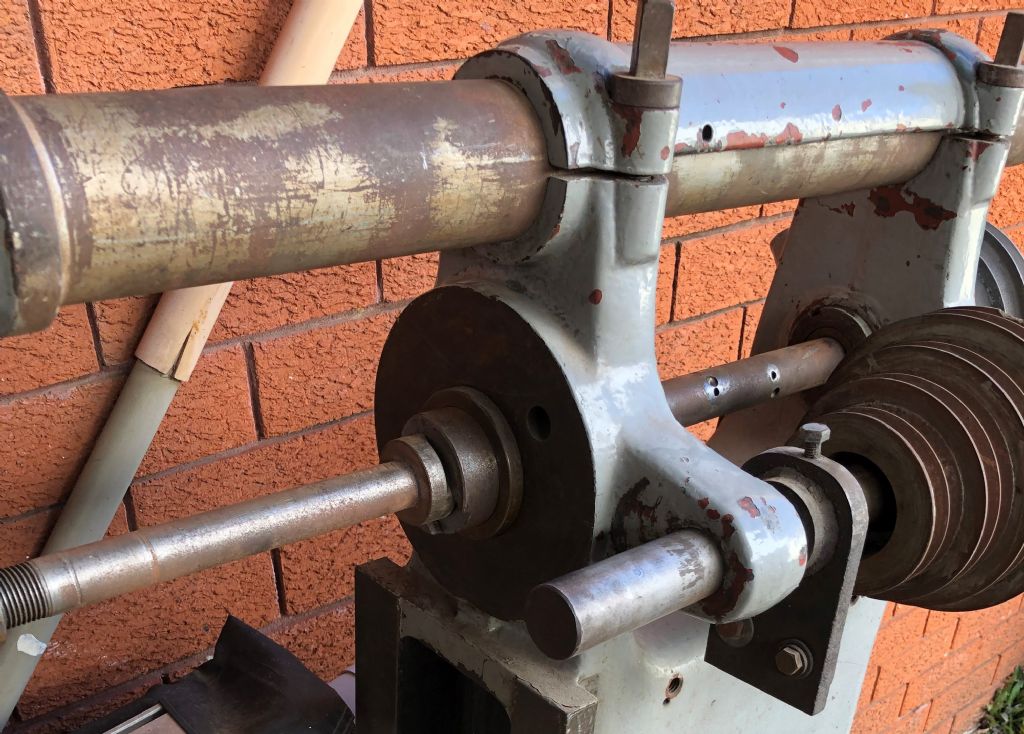
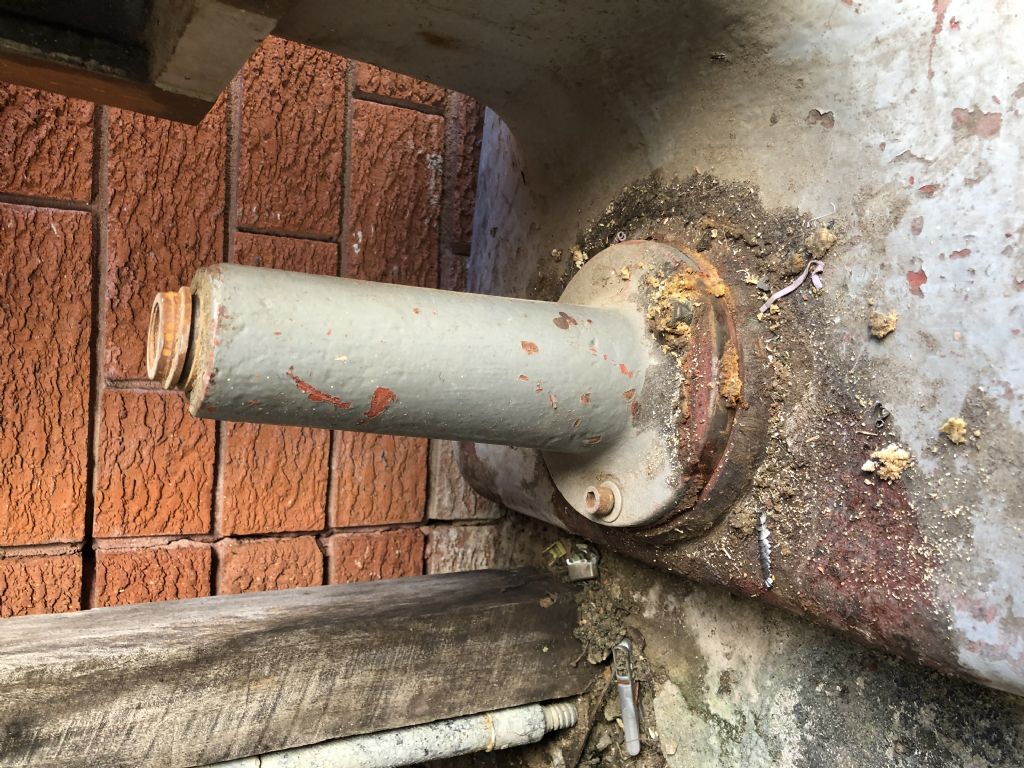

 cutters, for. e.g. making T-nuts, or end-squares/hexagons on the end of cylindrical work.
cutters, for. e.g. making T-nuts, or end-squares/hexagons on the end of cylindrical work.
